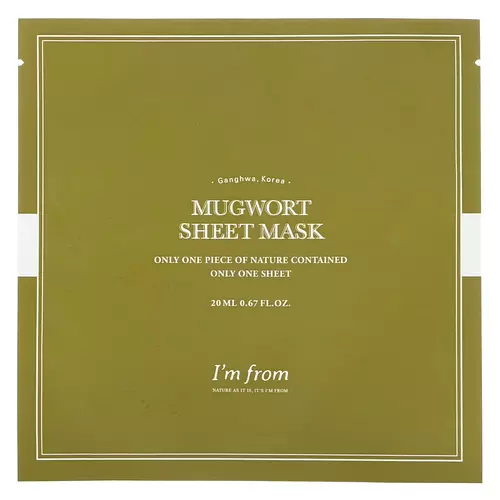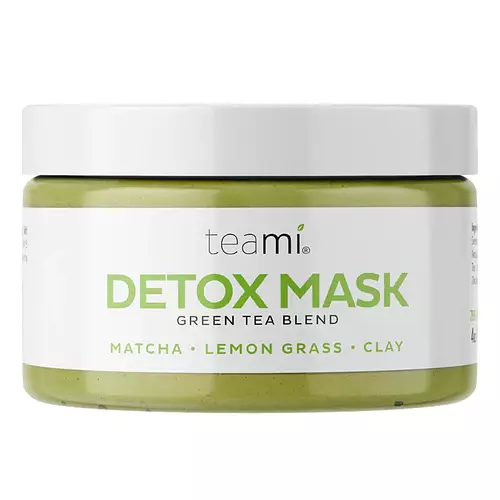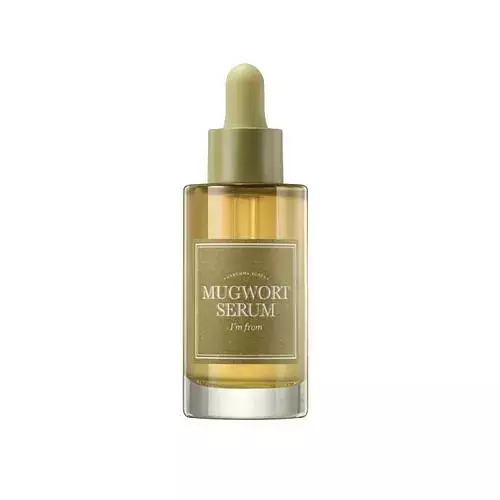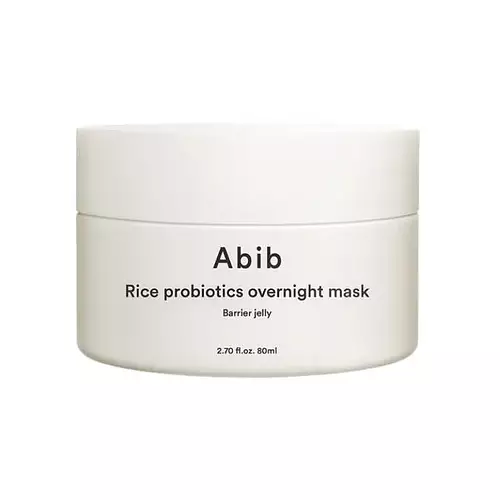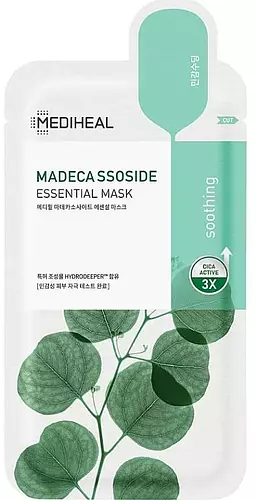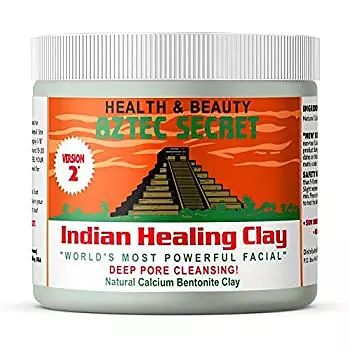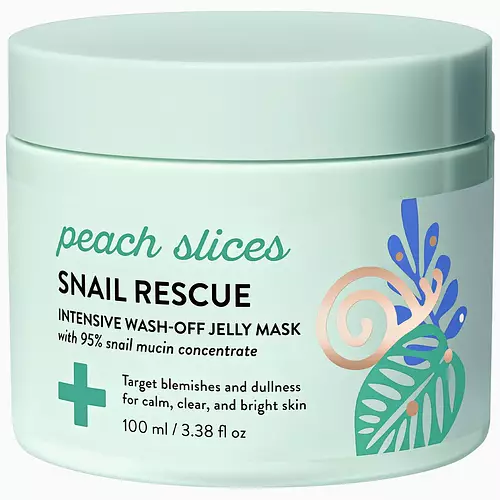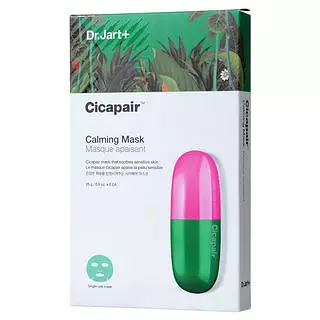Overview
What they are
These products are both cruelty-free and reef safe . They have a total of 8 ingredients in common
Suited For
They're both likely to be good for anti aging, dry skin, brightening skin, sensitive skin, scar healing and dark spots
Free From
They both do not contain any harsh alcohols, common allergens, fragrances, oils, parabens, silicones or sulfates
We independently verify ingredients, and our claims are backed by peer-reviewed research. Spot a product that needs an update? Let us know.
Ingredient Info
I'm from Mugwort Sheet Mask 15 ingredients
I'm from Mugwort Mask 26 ingredients
At a glance
Click on any of the items below to learn more
I'm from Mugwort Sheet Mask 15 ingredients
I'm from Mugwort Mask 26 ingredients
Benefits
This product contains 2 ingredients that may have this attribute:
This product contains 3 ingredients that may have this attribute:
This product contains 4 ingredients that may have this attribute:
This product contains 1 ingredient that may have this attribute:
This product contains 1 ingredient that may have this attribute:
This product contains 1 ingredient that may have this attribute:
This product contains 1 ingredient that may have this attribute:
Benefits
This product contains 1 ingredient that may have this attribute:
This product contains 6 ingredients that may have this attribute:
This product contains 6 ingredients that may have this attribute:
This product contains 1 ingredient that may have this attribute:
This product contains 1 ingredient that may have this attribute:
This product contains 1 ingredient that may have this attribute:
This product contains 2 ingredients that may have this attribute:
This product contains 1 ingredient that may have this attribute:
This product contains 1 ingredient that may have this attribute:
Ingredients Side-by-side
Ingredients Explained
These ingredients are found in both products.
Ingredients higher up in an ingredient list are typically present in a larger amount.
Butylene Glycol (or BG) is used within cosmetic products for a few different reasons:
- It is a solvent, meaning that it helps to dissolve other ingredients. This also enhances the absorption of the product into one's skin.
- It is a humectant, which means that it helps attract moisture into the skin.
- It helps improve product application.
Overall, Butylene Glycol is a safe and well-rounded ingredient. It is unlikely to irritate skin, and works well with pretty much all other ingredients.
Glycerin is already naturally found in your skin. It helps moisturize and protect your skin.
A study from 2016 found glycerin to be more effective as a humectant than AHAs and hyaluronic acid.
As a humectant, it helps the skin stay hydrated by pulling moisture to your skin. The low molecular weight of glycerin allows it to pull moisture into the deeper layers of your skin.
Hydrated skin improves your skin barrier; Your skin barrier helps protect against irritants and bacteria.
Glycerin has also been found to have antimicrobial and antiviral properties. Due to these properties, glycerin is often used in wound and burn treatments.
In cosmetics, glycerin is usually derived from plants such as soybean or palm. However, it can also be sourced from animals, such as tallow or animal fat.
This ingredient is organic, colorless, odorless, and non-toxic.
Glycerin is the name for this ingredient in American English. British English uses Glycerol/Glycerine.
Learn more about GlycerinCordyceps Sinensis Extract comes from a fungus that lives on caterpillars and insect larvae. It can also be made synthetically.
Cordyceps Sinensis Extract is an antioxidant and may help with reducing the signs of aging.
This fungus is mainly found in the mountainous regions of the Himalayas. It has been used in traditional Tibetan, Nepalese, and Chinese medicine to help with fatigue.
Learn more about Cordyceps Sinensis ExtractAllantoin plays a role in soothing and moisturizing the skin. Because of this, it is often added to products with strong active ingredients.
Some studies have shown this ingredient can promote wound healing with higher concentrations.
Allantoin is derived from the comfrey plant but produced synthetically for cosmetic products to ensure purity.
Learn more about AllantoinDipotassium Glycyrrhizate comes from licorice root.
Extracts of licorice have demonstrated to have antibacterial, anti‐inflammatory, antiviral, antioxidant properties.
One component, glabridin, has extra potent antioxidant and soothing properties. It has also been found to block pigmentation from UVB rays in guinea pigs.
Licorice Root also contains a flavonoid. Flavonoids are a natural substance from in plants. Flavonoids also have antioxidant properties.
Another component, glycyrrhizin, has been found to have anti-inflammatory and antimicrobial benefits. This may make licorice root extract effective at treating acne. However, more research is needed to support this.
Liquiritin is one of the flavone compounds found in licorice. It has been found to help lighten skin by preventing tyrosinase from reacting with tyrosine. When the two react, protein is converted to melanin. Melanin is the substance in your body that gives your features pigmentation.
Licorice root is native to Southern Europe and Asia. It has been used in traditional Chinese medicine to help with respiratory issues.
Learn more about Dipotassium GlycyrrhizatePanthenol (also referred to as pro-vitamin B5) is a common ingredient that helps hydrate and soothe the skin.
lt is a humectant, meaning that it helps the skin attract and retain moisture.
Another benefit is the anti-inflammatory abilities. This means that it's great for sensitive, irritation-prone skin.
Once oxidized, panthenol converts to pantothenic acid. Panthothenic acid is found in all living cells.
Learn more about PanthenolCarbomer is a polymer of acrylic acid. Its main role is to create gel consistency within products.
Carbomer is commonly found in many types of cosmetics products. It is found to be safe in concentrations up to 15%. However, a high amount of carbomer can cause pilling or balling up of products. Most products contain 1% of less of carbomer.
Arginine is an amino acid that is important for human development. Your body uses is it to produce hair keratin and skin collagen.
As a cosmetic ingredient, Arginine has antioxidant properties and can also help repair damaged skin. This ingredient is derived either synthetically or from animals.
Arginine isn't fungal acne safe when used in the presence of other lipids (fats, fatty acids, oils, esters, etc). Oils and fats occur naturally within the skin, so take caution when using Arginine if you're prone to fungal acne.
Learn more about ArginineIngredient Ratings
Here's what our community thinks of the ingredients in these two products.
When to use
I'm from Mugwort Sheet Mask 15 ingredients
I'm from Mugwort Mask 26 ingredients

Reviews
Here's what our community thinks
I'm from Mugwort Mask 26 ingredients
Aquila
An absolute MUST HAVE for sensitive skin
This mask is not only super hydrating and smoothing but also does a wonderful job of soothing irritation....
An absolute MUST HAVE for sensitive skin
This mask is not only super hydrating and smoothing but also does a wonderful job of soothing irritation. I use this at least twice a week for general hydration support, or as needed to calm irritation from other products. The product is free of synthetic fragrances, and it has a light herbal smell. Texture-wise, it is sticky and a bit gritty (from the natural mugwort contained within), but I find the benefits far outweigh this. A word of caution: if you're allergic to birch pollen, do NOT use this mask, as mugwort is in the same family. When in doubt, patch test first on the inner forearm.
EveliV
The texture of this mask is SO NICE! I love to spread it with the little spatula. I find it to have a strong scent, but nothing unbearable.
In...
The texture of this mask is SO NICE! I love to spread it with the little spatula. I find it to have a strong scent, but nothing unbearable.
In terms of reaction, I do feel a slight tingling at the end of the 10 minutes I leave it for, but it doesn't make my irritation worse. I just don't see it getting better either. For me, no drastic results/improvements.
The plus is that it does leave the skin hydrated and feeling fresh and doesn't break me out.
